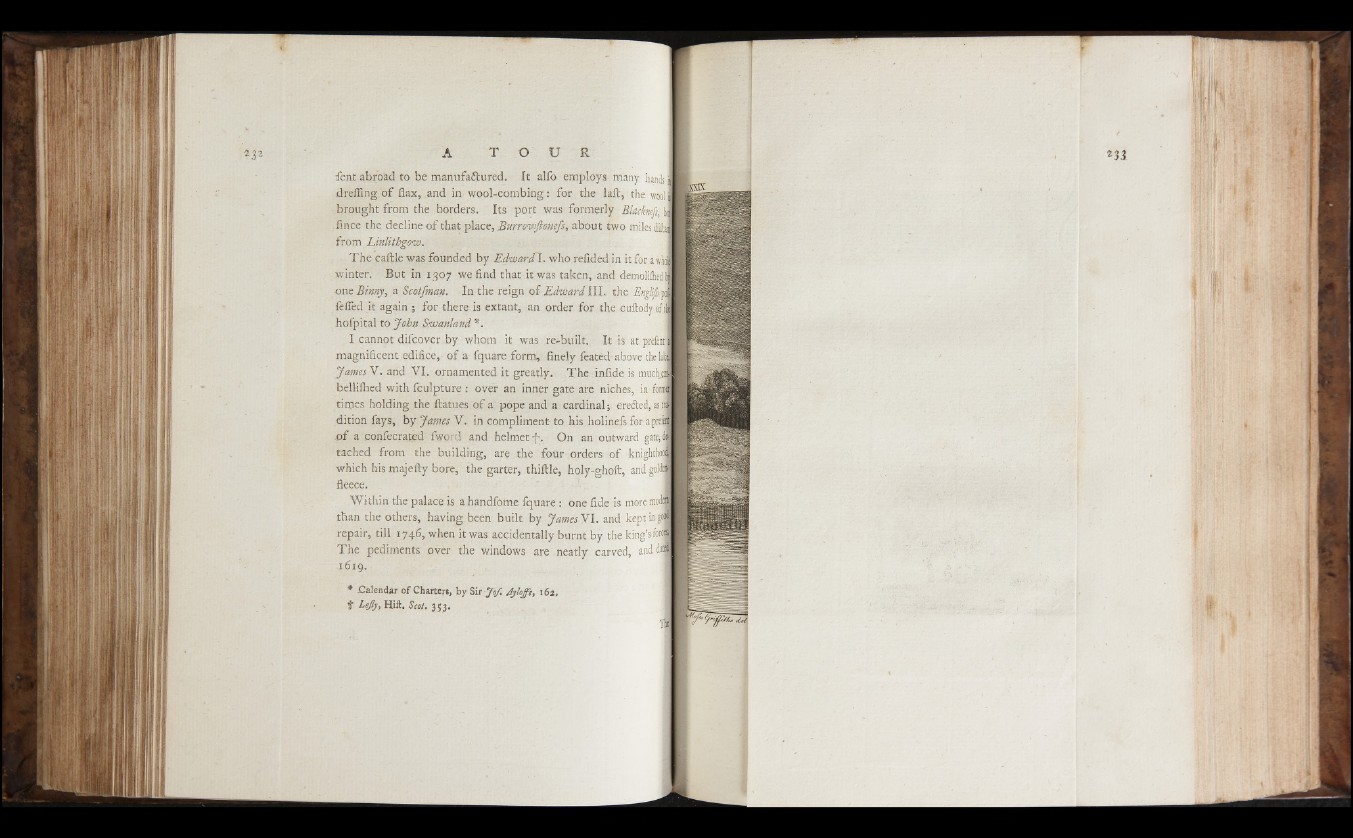
feat abroad to be manufactured. It alfo employs many hands !
dreflmg of flax, .and in wool-combing: for the laft, the wool J
brought from the borders. Its port was formerly Blacknifs, bf
.fince the decline of that place, Burrovijlonefs, about two miles dilM
from Linlithgow.
The caftle was founded by Edward I. who refided in it for a whal
winter. But in 1307 we find that it was taken, and demoliihedi
one Binny, a Scotfinan. In the reign of Edward III. the Englijl pi
felled it again ; for there is extant, an order for the cuftodyoftj
hofpital to John Swanland *.
I cannot difcover by whom it was re-built. It is at prefent i
magnificent edifice,, of a fquare form, finely feated above the hi
J antes V. and VI. ornamented it greatly. The infide is muchjJ
bellifhed with fculpture : over an inner gate are niches, in forml
times holding the ftatues of a pope and a cardinal; ereded, as til
dition fays, by James V. in compliment to his holinefs for apreftl
p f a confecrated fword and helmetf. On an outward gate,®
tached from the building, are the four orders of knighthodl
which his majefty bore, the garter, thiftle, holy-ghoft, and gold!
fleece.
Within the palace is a handfome fquare : one fide is more modi
than the others, having been built by James VI. and kept in go®
repair, till 1746, when it was accidentally burnt by the king’s fore®
The pediments over the windows are neatly carved, anddii
1619.
* Calendar o f Charter«, by Sir Jo/. Jyloffe, i6 a .
t Lejly, Hift. Sett. 353.
t|